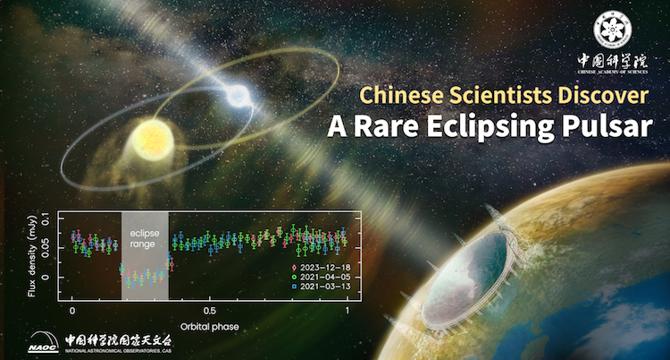Physicsworld
3w
246

Image Credit: Physicsworld
Short-lived eclipsing binary pulsar spotted in Milky Way
- Astronomers in China have discovered a pulsar that is partially eclipsed by an orbiting companion star in the Milky Way, shedding light on binary star system evolution.
- Binary systems involve two stars orbiting each other, with one possibly transferring mass to the other, leading to orbit shrinkage over about 1000 years.
- A rare binary system involves a neutron star and a helium star, where the latter can eclipse the former, hindering radio pulse detection from Earth.
- Astronomers using FAST in China identified the first such binary system in the Milky Way, named PSR J1928+1815, which has a short spin period.
- Observations over 4.5 years showed the system to have an almost circular orbit with a short period of 3.6 hours, during which the companion star eclipses the pulsar.
- The system's evolving orbital and spin characteristics suggest significant energy loss, indicating rapid changes.
- The discovery confirms long-standing theories on binary star evolution, revealing insights into mass exchange, orbit shrinkage, and neutron star behavior.
- This short-lived binary system, lasting 1000 years, demonstrates the common envelope evolution, which is difficult to observe directly.
- The system's study presents opportunities to research neutron star matter accretion, cooling processes, and potential future gravitational wave sources.
- The findings are detailed in the scientific journal Science, marking a significant astronomical discovery.
- This unique observation supports existing theories on binary star system evolution and paves the way for further research and understanding.
- The binary pulsar system in the Milky Way could offer valuable insights into the behavior of compact stars and their eventual merger.
- The discovery showcases the utility of advanced telescopes like FAST in uncovering rare astronomical phenomena.
- Astronomers anticipate that the binary system identified will continue to evolve and ultimately merge, potentially generating gravitational waves.
- The study underscores the importance of ongoing astronomical observations in unraveling the mysteries of the cosmos.
- The observation of this short-lived binary system provides significant data for astrophysical research and contributes to expanding our knowledge of stellar evolution.
Read Full Article
14 Likes
For uninterrupted reading, download the app